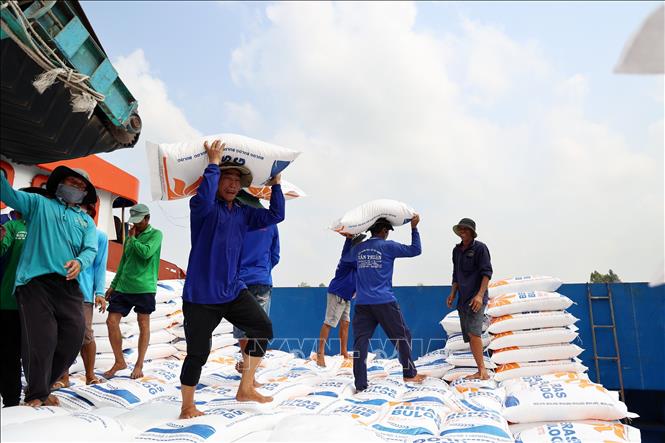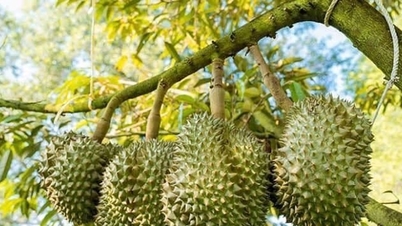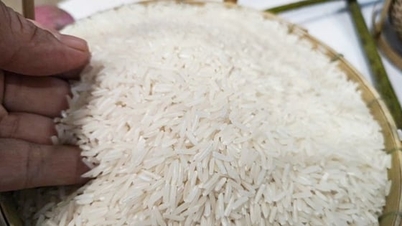
Prices for Vietnam’s 5% broken fragrant rice were also unchanged from last week at $415-$430 a tonne, but a trader in Ho Chi Minh City said trading activity was sluggish due to weak demand.
In the domestic market, according to the Institute of Strategy and Policy on Agriculture and Environment, in Can Tho, Jasmine rice is still priced at VND8,400/kg, the same as last week; IR 5451 rice is VND6,200/kg; ST25 is VND9,400/kg; OM 18 alone is VND6,600/kg.
In Dong Thap , IR 50404 rice costs 6,600 VND/kg, OM 6976 is 6,500 VND/kg. In Vinh Long, IR 50404 rice costs 6,600 VND/kg.
In An Giang, prices of most fresh rice varieties remained stable compared to last week, IR 50404 was purchased at 5,100 - 5,300 VND/kg; OM 5451 from 5,300 - 5,500 VND/kg; OM 18 at 5,600 - 5,700 VND/kg; Dai Thom 8 from 5,600 - 5,800 VND/kg.
In An Giang's retail market, rice prices are mostly stable: regular rice 11,000 - 12,000 VND/kg; Thai fragrant rice 20,000 - 22,000 VND/kg; Jasmine 16,000 - 18,000 VND/kg; white rice 16,000 VND/kg, Nang Hoa 21,000 VND/kg, Huong Lai 22,000 VND/kg, Taiwanese fragrant rice 20,000 VND/kg, Soc normal rice 17,000 VND/kg, Soc Thai rice 20,000 VND/kg, Japanese rice 22,000 VND/kg.
The price of IR 50404 raw rice remains at 7,600 - 7,700 VND/kg, IR 504 finished rice is from 9,500 - 9,700 VND/kg; OM 380 raw rice is from 7,200 - 7,300 VND/kg; OM 380 finished rice fluctuates at 8,800 - 9,000 VND/kg.
For by-products, the price of various by-products ranges from 7,100 - 10,000 VND/kg. The price of dry bran is at 9,000 - 10,000 VND/kg.
According to the Department of Crop Production and Plant Protection, as of November 6, in the Mekong Delta, the 2025 Autumn-Winter crop has been planted on 713,753 hectares and 48% of the area has been harvested, with an estimated yield of 56.3 quintals/hectare. Notably, the most important crop, the 2025/2026 Winter-Spring crop, has also begun to be sown on 174,825 hectares.
However, storms, floods and high tides have damaged nearly 4,400 hectares of rice from different crops; of which more than 1,800 hectares were completely lost (over 70% damage). The heaviest damage was concentrated in the Autumn-Winter crop in An Giang, Tay Ninh and Vinh Long provinces with a total affected area of 3,900 hectares.
The gloomy rice export market caused the price of 5% broken rice from Thailand to close the trading week at 335 USD/ton on November 13, down slightly from 338 USD/ton last week and the lowest level since October 2007.
A Bangkok-based trader said buyers were buying in small quantities because of reports that India would release more rice at cheaper prices than Thai rice. He also expressed concern that farmers would lose interest in the crop if prices remained low. The situation is getting worse as supplies in Thailand continue to increase as the rainy season ends.
Meanwhile, in India, 5% broken parboiled rice prices were flat this week at $344-$350 a tonne. Similarly, 5% broken white rice was also stable at $350-$360 a tonne. A dealer in New Delhi said supplies from the new crop were starting to put pressure on domestic rice prices, despite the government’s heavy purchases for stockpiling.
Regarding the US grain market, grain prices on the Chicago Board of Trade (CBOT) plummeted in the session of November 14 after the US Department of Agriculture (USDA) released a supply-demand report that was expected by the market, along with export data that partly revealed China's purchasing activities.
At the close of trading, soybeans fell 22.5 cents to $11.245 a bushel. Corn lost 11.25 cents to $4.3025 a bushel, while wheat fell 10.75 cents to $5.415 a bushel (1 bushel of wheat/soybeans = 27.2 kg; 1 bushel of corn = 25.4 kg).
The impact of the above reports on the market was very clear. Although the USDA lowered its forecasts for US corn and soybean yields and production in 2025, the cuts were not as deep as traders expected. Specifically, the USDA revised down the forecast for US corn yields in 2025 from 186.7 bushels per acre to 186.0 bushels per acre, bringing the estimated output down from 16.814 billion bushels to 16.752 billion bushels (1 acre = 0.4047 ha).
For soybeans, the agency also lowered its yield forecast from 53.5 bushels per acre to 53.0 bushels per acre and production from 4.301 billion bushels to 4.253 billion bushels.
Don Roose, president of US Commodities, said the market reacted negatively because corn yields did not fall as much as expected, while ending inventories increased. In addition, many traders also expected soybean yields to fall even lower.
In addition to the supply-demand report, the USDA also released a daily summary of U.S. agricultural sales over the past six weeks, providing additional information on China’s recent purchases. The data showed that the country had booked a total of 332,000 tonnes of soybeans for delivery in the 2025/2026 marketing year, with 100,000 tonnes booked as of October 30.
However, this figure is still quite modest. The market is still waiting for China to confirm its commitment to buy 12 million tons of soybeans as previously announced by the White House.
The world coffee market showed that on November 14, world coffee prices continued to decrease on two major exchanges. Specifically, on the European ICE Futures exchange, the price of Robusta coffee contracts for November 2025 delivery decreased by 120 USD to 4,249 USD/ton. The price of contracts for January 2026 delivery decreased by 120 USD to 4,223 USD/ton.
On the ICE Futures exchange in the US, the Arabica coffee contract for delivery in December 2025 fell 1.90 cents/lb to 399.80 cents/lb. The contract for delivery in March 2026 fell 0.25 cents to 374 cents/lb.
In Vietnam, coffee prices on November 15 in the Central Highlands continued to fall sharply compared to yesterday and are currently averaging around 109,800 VND/kg. Accordingly, coffee prices in Dak Lak decreased by 2,500 VND/kg to 110,500 VND/kg. Similarly, coffee prices in Lam Dong decreased by 2,400 VND/kg to 108,700 - 110,500 VND/kg. Coffee prices in Gia Lai also decreased by 2,700 VND/kg compared to yesterday to 109,800 VND/kg.
Despite the recent decline, coffee prices will still be supported by signs of tightening global supplies, according to observers. A recent report by the International Coffee Organization (ICO) said global coffee exports in the 2024/2025 crop year will fall 0.3% compared to the previous crop year to 138.658 million bags.
Analysts say the Vietnamese coffee market could continue to benefit from a decline in global output, especially in Brazil and Indonesia, two countries affected by extreme weather events.
Source: https://baotintuc.vn/thi-truong-tien-te/gia-gao-xuat-khau-di-ngang-20251116121921229.htm




![[Photo] Prime Minister Pham Minh Chinh meets with representatives of outstanding teachers](https://vphoto.vietnam.vn/thumb/1200x675/vietnam/resource/IMAGE/2025/11/15/1763215934276_dsc-0578-jpg.webp)
![[Photo] General Secretary To Lam receives Vice President of Luxshare-ICT Group (China)](https://vphoto.vietnam.vn/thumb/1200x675/vietnam/resource/IMAGE/2025/11/15/1763211137119_a1-bnd-7809-8939-jpg.webp)





































































































Comment (0)